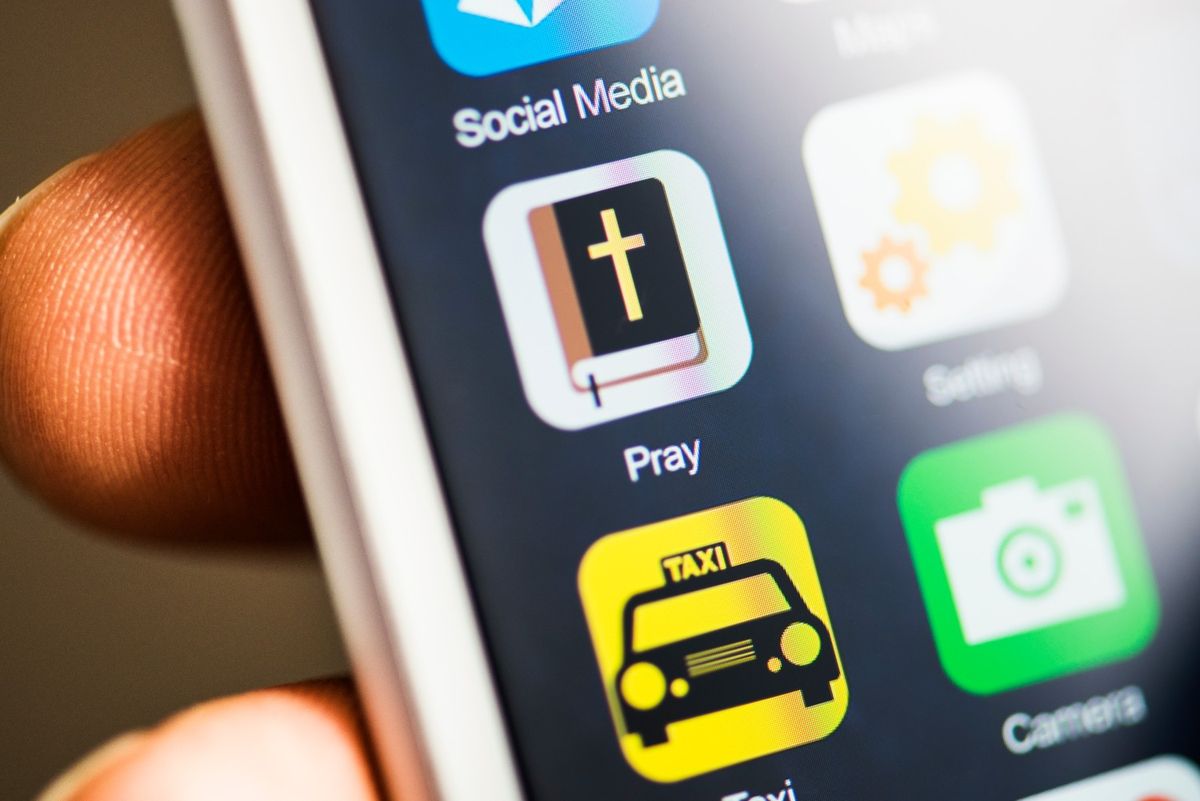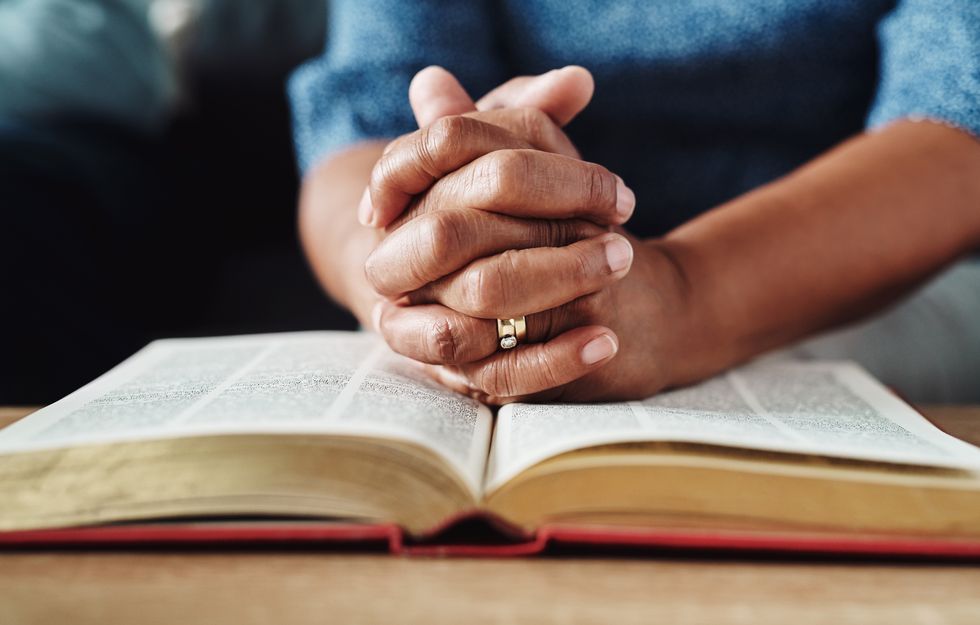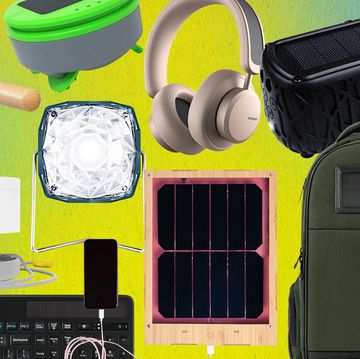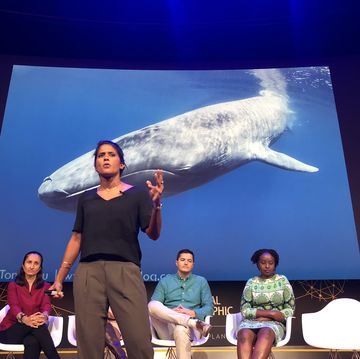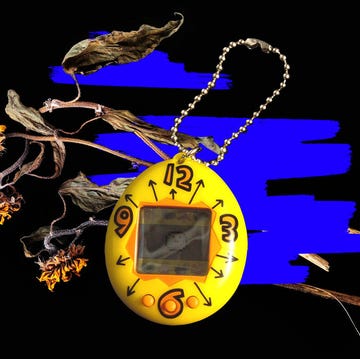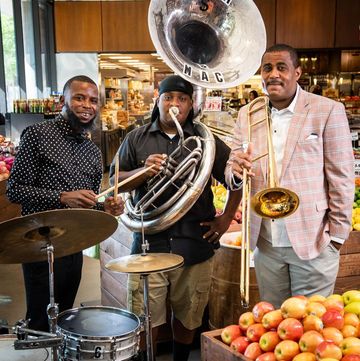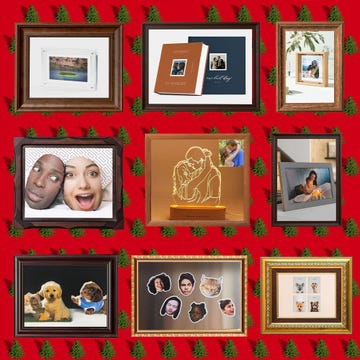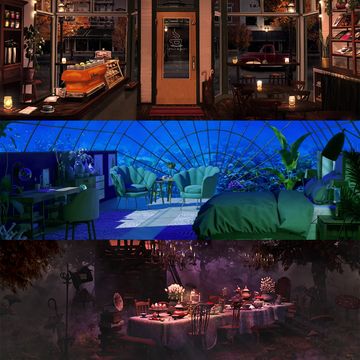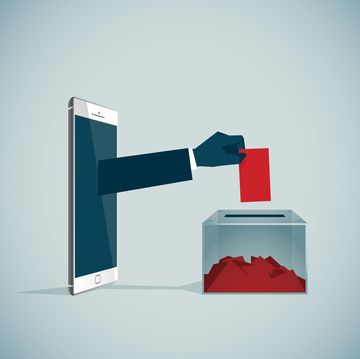When people are sharing videos of healing sessions filled with sounds from bells, crystal bowls and gongs on a professional networking site like LinkedIn — it’s safe to say that tech-infused spirituality has gone mainstream.
It’s a study in contradictions, since recent surveys have shown that when it comes to religion, more Americans are increasingly identifying as “atheist” or “nothing in particular,” and church attendance outside of weddings or major holidays is waning.
A 2019 PEW survey found that the number of Americans identifying as Catholic or Protestant has declined by 12 percent over the past decade, and a 2015 study from San Diego State University found that 75 percent of 12th graders and college students reported that they never attended religious services. The PEW research did find that among self-identified Christians attendance to religious services has not declined over time.
Despite these findings, millennials are turning to new age practices, such as astrology, tarot, sound baths, and Reiki, in place of traditional religions. This explains the explosion of new age Instagram and YouTube accounts. You can also easily find free online tarot card readings and have your astrological chart calculated instantly for free, something that used to be calculated by a learned astrologer, and it took time and certainly wasn’t free.
With millennials reporting higher levels of anxiety and depression due to issues like college debt, entering the workforce on the heels of the Great Recession, and the isolation and atomization that comes with constant use of social media, it makes sense that they’re grasping for an anchor. And it’s no surprise that, as digital natives, they feel perfectly home seeking that anchor on their iPhone or computer.
Regardless of these trends, there are still plenty of Americans who ascribe to the Abrahamic religions — Christianity, Islam, and Judaism. They, too, can use digital platforms and devices to connected spiritually.
Thanks to an explosion of devices and mobile apps, there’s an entirely new world of spirituality available to people, whether they’re lapsed believers, devoutly religious, or anyone and everyone in between.
A Pew Research Center survey last year found that between April and June of 2019, churches across America delivered nearly 50,000 sermons online through a combination of text, audio and video.
California-based Saddleback Church, for example, offers a weekly online session that attracts an average of 20,000 attendees that tune in for 30 mins or more.
Along with worship, people are also consuming lots more faith-focused content on-the-go. Whether it’s podcasts like Tell Them, I Am, that offers a glimpse into the everyday lives of American Muslims, or apps like ePuja that let faithful Hindus simulate making offerings and virtual temple pilgrimages from afar — quicker content that connects us to religion and spirituality has been growing in popularity.
On a mission to digitize The Good Book, one story at a time
As the largest religious group that crosses U.S. states, ages, races, and denominations (with 167 million believers, and counting), Christianity is a major driver of religion’s tech-enabled facelift in America.
The team at the Bible Project aims to connect them all through what may be the most unifying, apolitical thread that exists: the Bible.
Founded in 2014 by two friends in Portland, Oregon, the Bible Project launched with just two videos on YouTube and a simple vision — to use technology and visual storytelling to help people experience the Bible as a “unified story that leads to Jesus.” Six years later, it’s grown into a thriving digital property with over 140 videos and more than a million subscribers worldwide.
The videos are short, “snackable,” and animated, a format choice that has helped the Bible Project expand far beyond its humble origins. Since the notion of what constitutes being a “good” Christian can trigger discussions that veer into charged areas like politics, the team wanted to stay out of that territory and focus on helping people connect with the Bible itself.
“Animation is great for conveying really complex ideas, as opposed to just having someone look at the camera and explain things,” said Michael McDonald, the Bible Project’s director of strategic partnerships. “There’s also a much longer shelf life, as you can see with movies like Toy Story that are 20-plus years old, which hold up visually and are still relevant today.”
Animated videos also make it easier to translate the content for non-English speakers — but the most beneficial aspect of the cartoon-style storytelling may be its ability to disarm and unify the disparate viewers.
“Choosing to focus on the Bible and not a specific denomination was very strategic and intentional,” McDonald said. “From Catholics and Protestants to the Jewish scriptures that essentially make up the Old Testament, to Jesus being a prominent figure in the Qur’an — it’s a sacred text for so many folks.”
The Bible Project’s videos are accessible through platforms like YouTube, Vimeo and the (mobile) Bible App.
From digital bibles to virtual churches
For devotees of the VR Church, divinity comes through sermons in a virtual reality headset.
Founded in 2016, people attend VR Church by logging in to a virtual community like AltSpace or Rec Room, then interact with each other through digital versions of themselves, called avatars.
“It’s the first church to exist entirely in virtual reality, and we have people attending from all around the world,” said Kari Soto, a co-founder and member of the VR Church’s prayer team.
Services are led by pastors like Soto’s co-founder and husband D.J., with four designated sessions on Sundays, and various God-focused virtual discussion groups during the week.
The numbers aren’t huge — Soto said the Sunday sessions typically attract around 50 attendees each — but the appeal of the VR Church seems to be more about how inclusive, positive and accessible the community is, not necessarily its size.
“VR Church offers services in an accessible and non-threatening way, for people who are homebound, differently-abled, have social anxieties, past religious trauma, or spiritual abuse,” Soto said. “We also have people attend who have cerebral palsy, autism, spina bifida, fear of speaking, are just plain lonely, or simply enjoy the community.”
Finding God in mobile games and wearable gadgets
And then there’s Follow JC GO!
Developed by the evangelical organization Fundacion Ramon Pane, Follow JC GO! players “catch” saints and other Biblical characters by answering religious questions, all while maintaining their avatar’s levels of health, nutrition, and spirituality.
Yes, it’s essentially the Vatican-sanctioned version of Pokemon GO — the wildly popular mobile game where people roam around the real world to find and capture Nintendo’s animated pets.
Follow JC GO! launched as part of a big push for World Youth Day 2019, an international Catholic event focused on building faith in the younger generation. Initially, players could visit specific points of interest in Rome where characters were “hidden” as a way to build up their virtual prayer squad, but now it’s available to users around the world.
Meanwhile, the Click to Pray eRosary is a sleek tracker for both fitness and faith in one.
Complete with Bluetooth capabilities, wireless charging and an accompanying app, users make the sign of the cross to activate the bracelet, and it helps them keep track of their progress in terms of reciting the Catholic rosary.
Of course, both examples — the smart rosary and the Follow JC Go! game — are more novelties than everyday occurrences, but they’re just the latest signs that the Vatican is increasingly turning to tech to build deeper connections within their communities.
Whether it’s to get kids more actively engaged in their faith, to help bridge the gaps between disparate belief structures, or just making church more accessible to those who may not be able to leave the house, religious institutions around the globe are infusing modern technology and convenience into these ancient, analog traditions.
Driven by our increasingly connected and typically mobile lifestyles, the trend of finding faith and connection to God, the Goddess, or another higher power through technology shows no signs of stopping.
Tameka Kee curates unforgettable experiences and thought-provoking conversations at the intersection of advertising, technology and culture. Find her on Twitter @geekychic
Get Shondaland directly in your inbox: SUBSCRIBE TODAY
